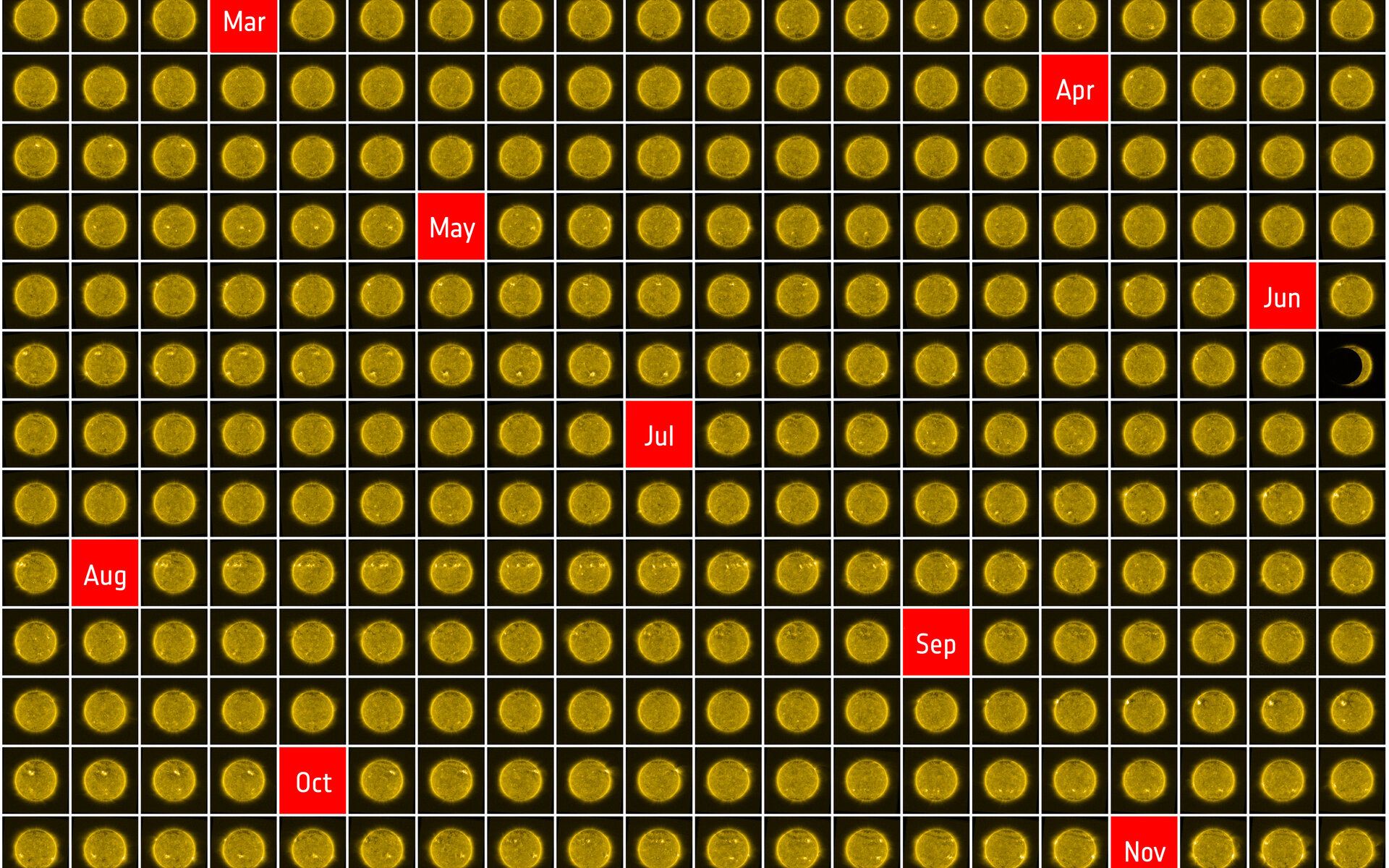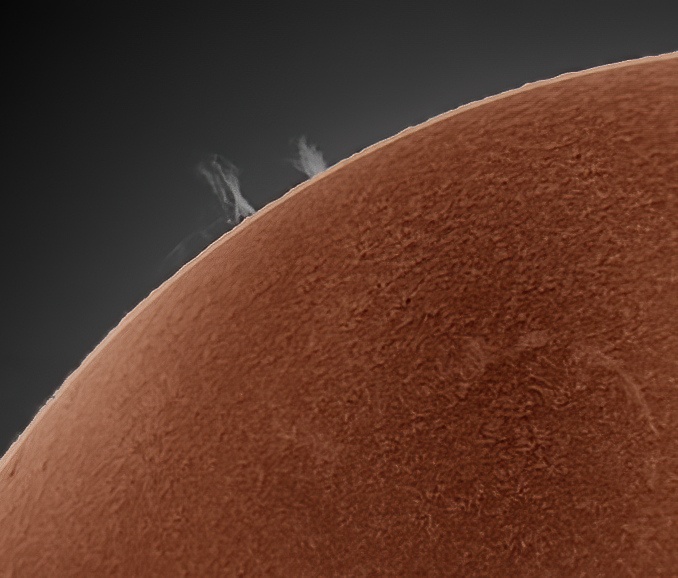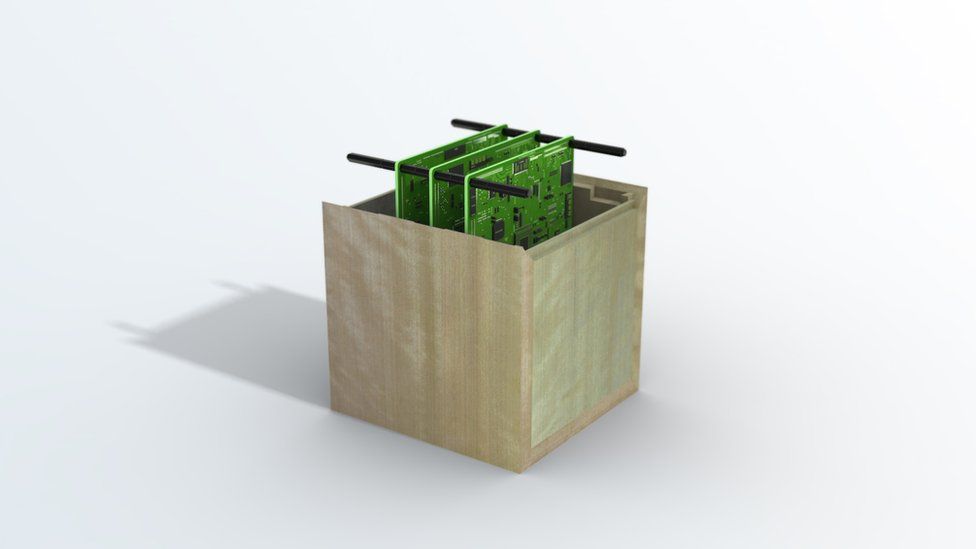Student-led teams aren’t the only ones testing out novel electric propulsion techniques recently. Back in November, a company called Exotrail successfully tested a completely new kind of electric propulsion system in space – a small hall-effect thruster.
Continue reading “The First Cubesat With a Hall-Effect Thruster has Gone to Space”Planets are Finally Being Discovered Orbiting Farther From Their Stars
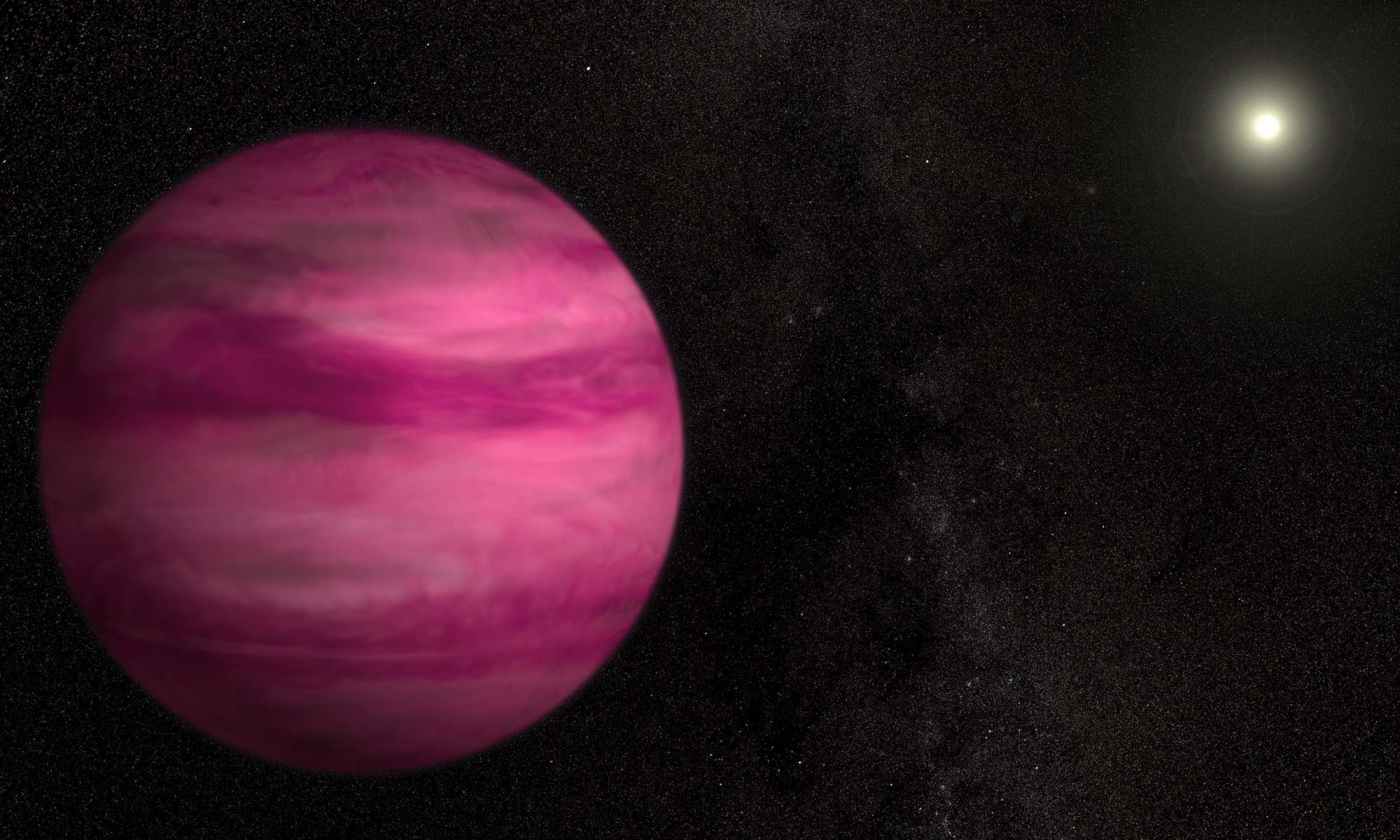
Discovering exoplanets is a difficult job. Given the challenges, it’s amazing that we’ve found any at all. But astronomers are clever, so there are currently more than 4,300 confirmed exoplanets. They range from small Mercury-sized worlds to planets larger than Jupiter, but most of them have one thing in common: they orbit close to their home star.
Continue reading “Planets are Finally Being Discovered Orbiting Farther From Their Stars”This is What the Sun Looked Like for Every Day in 2020
Have you ever seen the videos of people taking daily selfies of themselves over the course of years or even decades? Now the sun has started it’s own series of pictures – with 366 complete pictures from the year 2020, captured by the European Space Agency’s Proba-2 satellite.
Continue reading “This is What the Sun Looked Like for Every Day in 2020”According to the Math, it’s Highly Unlikely That an Intelligent Civilization is Located at Alpha Centauri
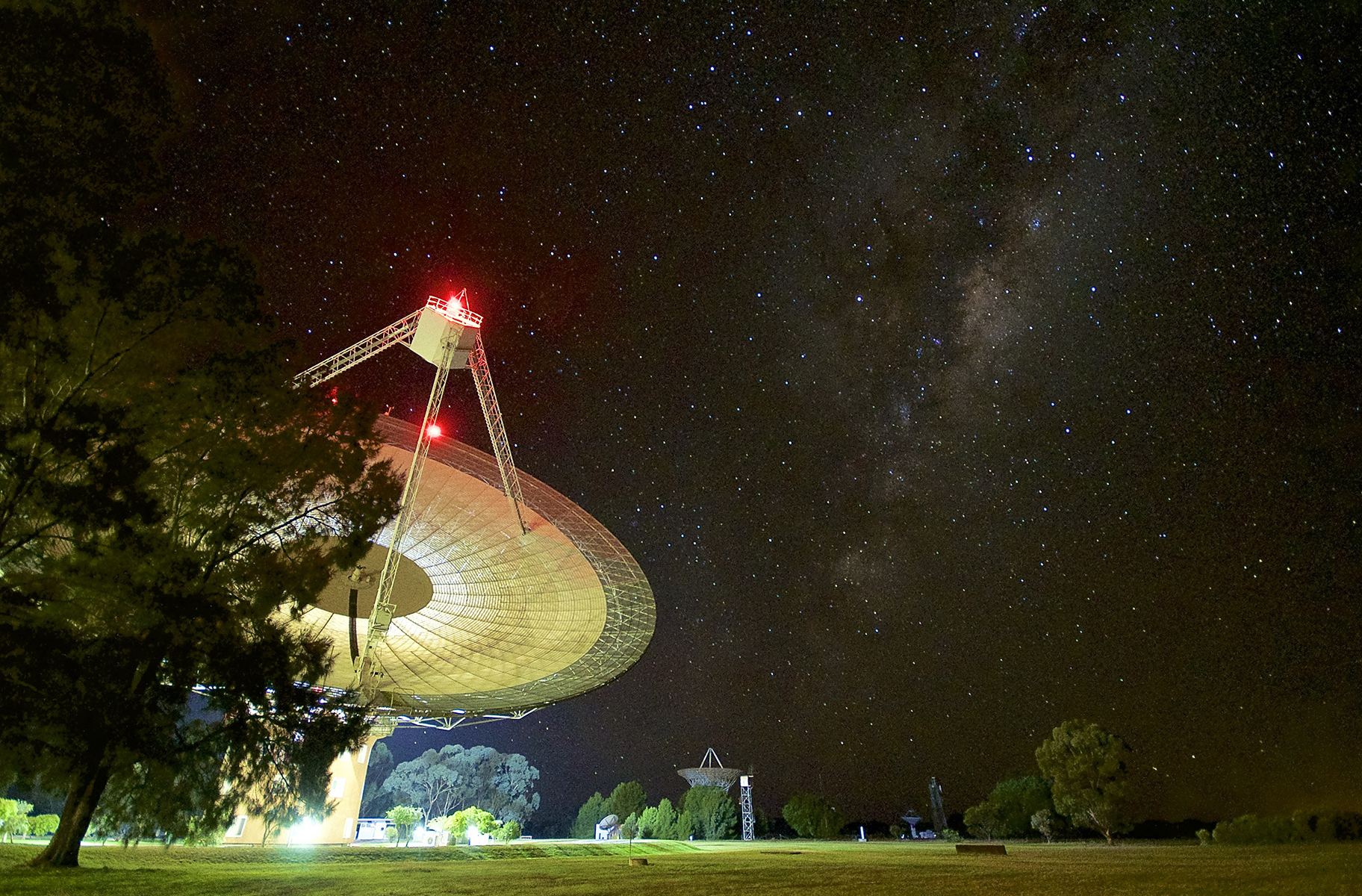
In December of 2020, the world got a bit of a pre-holiday surprise when it was announced that astronomers at the Parkes radio telescope in Australia had detected a “tantalizing” signal coming from Proxima Centauri (the red dwarf companion of the Alpha Centauri system). Afterward, researchers at Breakthrough Listen consulted the data on the signal – Breakthrough Listen Candidate 1 (BLC1) – and noted the same curious features.
However, the scientific community has since announced that the signal is unlikely to be anything other than the result of natural phenomena. This was also the conclusion reached by Amir Siraj and Prof. Abraham Loeb of Harvard University after they conducted a probability assessment on BLC1. Like the vast majority of candidate radio signals discovered to date, this one appears to be just the forces of nature saying hello.
Continue reading “According to the Math, it’s Highly Unlikely That an Intelligent Civilization is Located at Alpha Centauri”James Webb Unfolds Sunshield
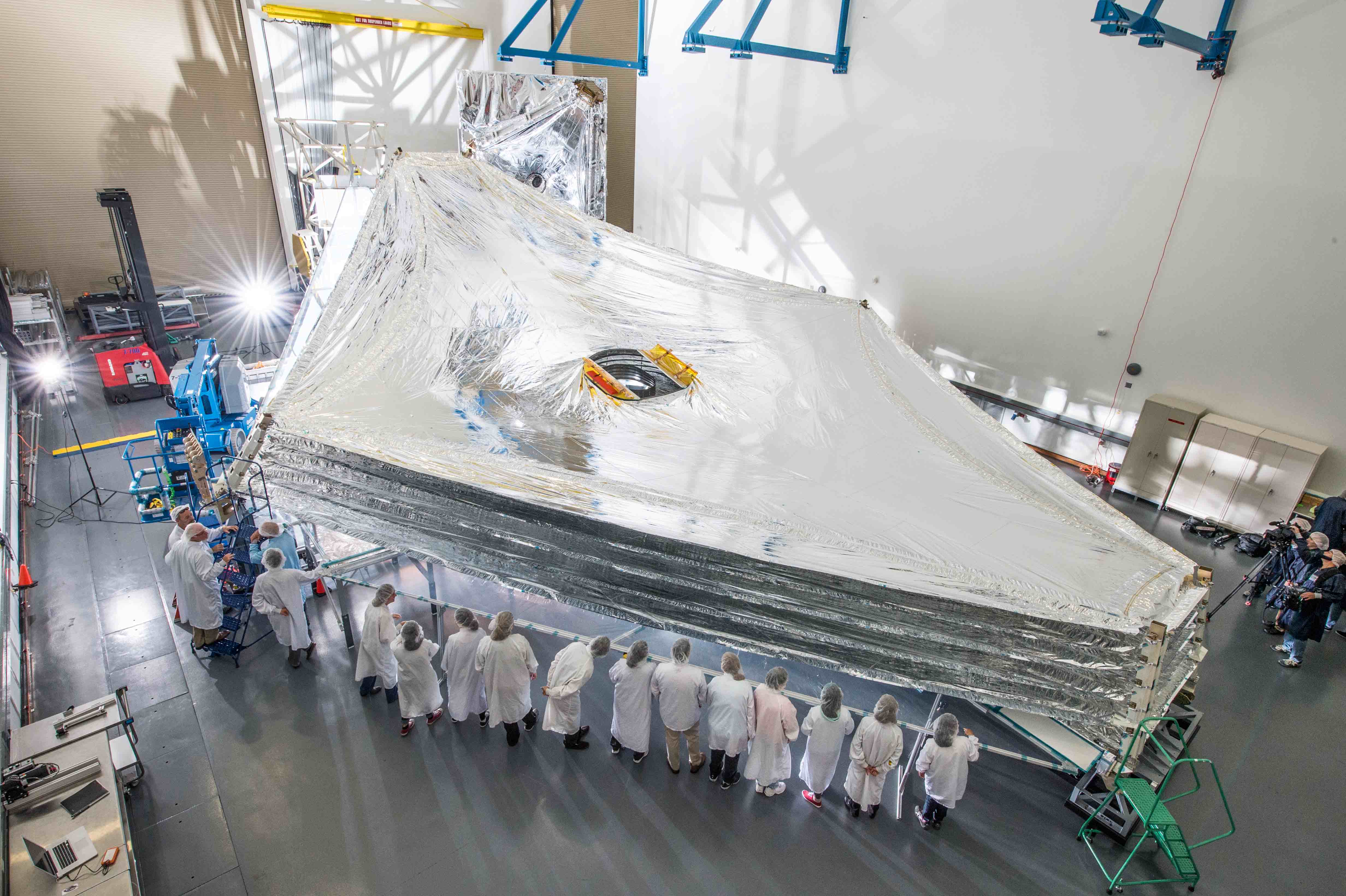
It’s almost time.
Soon the James Webb Space Telescope will be on its way to the Sun/Earth L2 Lagrange point and will begin its at least 5-year science mission. Really, it’s going to happen.
Despite several delays since the program began in 1996 and a budget that has exceeded the original by several billion dollars, the launch of the JWST seems close at hand. That is if you consider almost a year away (the new planned launch date is October 31, 2021) to be close.
Continue reading “James Webb Unfolds Sunshield”The Roman Space Telescope’s Version of the Hubble Deep Field Will Cover a 100x Larger Area of the Sky
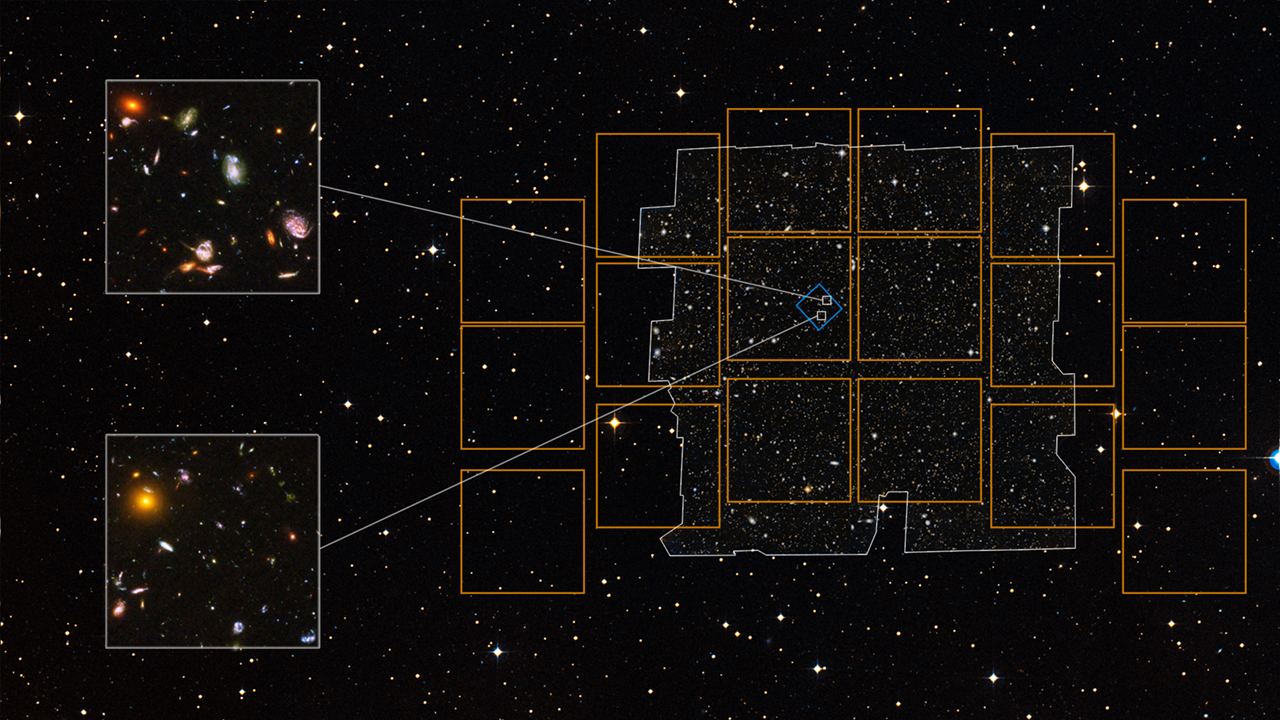
Remember the Hubble Deep Field? And its successor the Hubble Ultra Deep Field? We sure do here at Universe Today. How could we forget them?
Well, just as the Hubble Space Telescope has successors, so do two of its most famous images. And those successors will come from one of Hubble’s successors, NASA’s Roman Space Telescope.
Continue reading “The Roman Space Telescope’s Version of the Hubble Deep Field Will Cover a 100x Larger Area of the Sky”Will Solar Cycle 25 Dazzle or Fizzle in 2021?
A new study suggests that Solar Cycle 25 may be more powerful than previously predicted.
It’s the big question in solar astronomy for 2021 and the new decade. Will Solar Cycle 25 wow observers, or be a washout? A new study goes against the consensus, suggesting we may be in for a wild ride… if predictions and analysis of past solar cycle transitions hold true.
Continue reading “Will Solar Cycle 25 Dazzle or Fizzle in 2021?”The Mystery of Sunquakes is Deep; One Million Meters Deep!

The Sun, as it turns out, is a pretty big deal. The thermonuclear behemoth at the center of the solar system makes up well over 99% of all the mass in the solar system. Despite being the most well-studied star in the universe, there are still many mysteries about its works.
One of the Sun’s mysteries is the nature of sunquakes, massive ripples traveling thousands of kilometers across the sun’s surface. Occasionally, when a solar flare erupts, so-called seismic transients can be seen rippling through the solar surface over the next hour. The energy source driving these ripples was thought to be either the transient heating of the solar atmosphere during the flare event or by the powerful flexing of magnetic flux applied directly to the photosphere(the sun’s visible surface) itself, also originating in the flare event above. Using data from the Solar Dynamics Observatory (SDO), scientists have published a paper in the Astrophysical Journal of Letters that, for the first time, describes submerged sources of transient acoustic emission (sunquakes). The source of these mysterious waves seems to be, as it turns out, a thousand kilometers deep below, in the churning, seething hot interior of the star.
Continue reading “The Mystery of Sunquakes is Deep; One Million Meters Deep!”There Should be a few Supernovae in the Milky Way Every Century, but we’ve Only Seen 5 in the Last 1000 Years. Why?

Our galaxy hosts supernovae explosions a few times every century, and yet it’s been hundreds of years since the last observable one. New research explains why: it’s a combination of dust, distance, and dumb luck.
Continue reading “There Should be a few Supernovae in the Milky Way Every Century, but we’ve Only Seen 5 in the Last 1000 Years. Why?”Japan to Launch ‘Wooden Satellite’ in 2023
What a proposed wooden satellite could (and could not) accomplish.
A strange satellite proposal made at the end of 2020 by a Japanese company had many space pundits scratching their heads into 2021.
The proposal came out of Kyoto University in partnership with Sumitomo Forestry in Japan, though most of the information on the project comes from a BBC post quoting Japanese Aerospace Exploration Agency (JAXA) astronaut and Kyoto University professor Takao Doi, who flew aboard the U.S. space shuttle on missions STS-87 and STS-123 to the International Space Station. STS-123 delivered and installed JAXA’s Kib? module in 2008.
Continue reading “Japan to Launch ‘Wooden Satellite’ in 2023”

